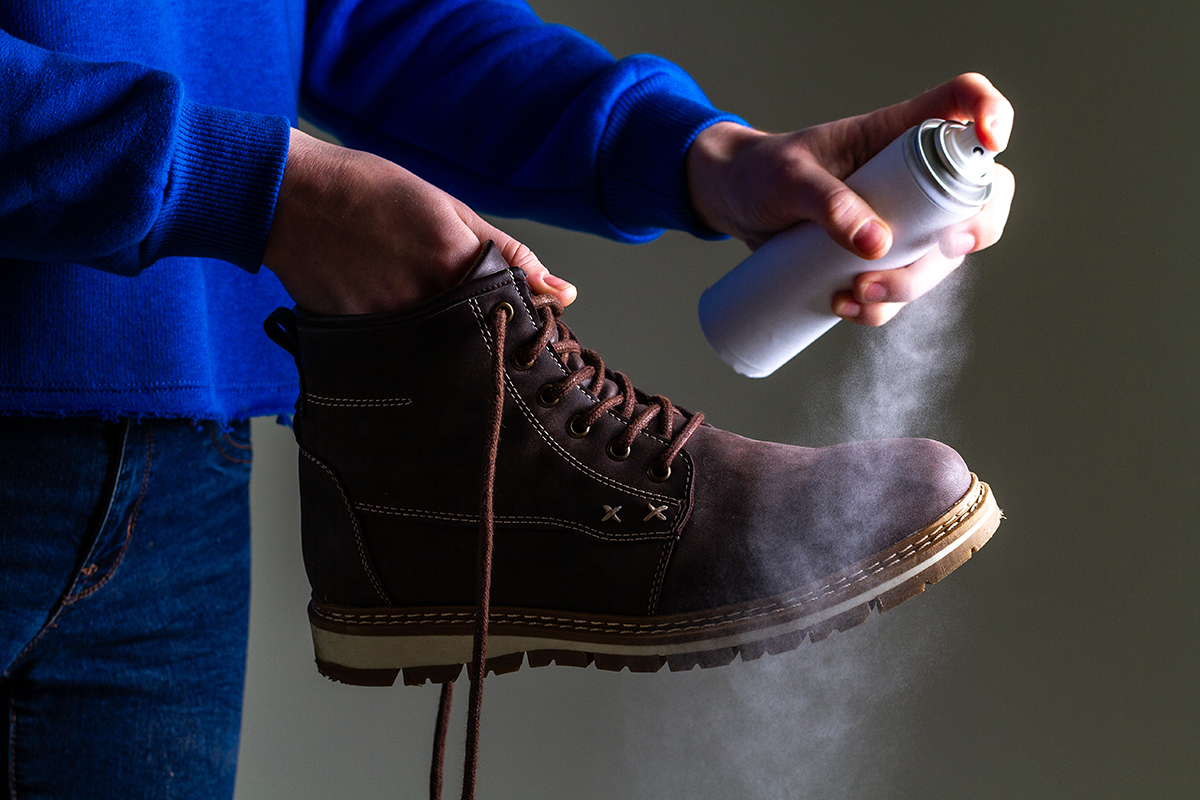Winter shoes are exposed to harsh conditions on a daily basis: snow, ice, chemicals and constant humidity. For boots, boots or booties to keep their presentable appearance and serve longer, they need proper care. In this article – effective tips that will help to extend the life of winter shoes and protect them from damage.
Preparing your shoes for the winter season: protection is the key to longevity
To keep your winter shoes in good condition, you need proper preparation and protection from moisture, salt and chemical reagents that are used to treat the roads.
Water repellents
Water-repellent sprays or creams are a must for winter shoes. Apply them to clean and dry shoes and let them dry before going outdoors. This will create a protective barrier against moisture, which will prevent stains and damage to the material. It is advisable to repeat the procedure every two to three weeks, especially if the weather is wet.
Treatment of the sole
The sole of winter shoes should provide a good grip on the surface. For this purpose, use anti-slip sprays. In some cases, you can apply a special sole pad to reduce the risk of slipping. Such care will prolong the life of the sole and increase safety on ice.
Skin protection cream
It is important to use protective creams for leather shoes in winter. They nourish the leather, making it elastic and resistant to cracks. Creams create a protective layer that prevents the penetration of moisture and salt, which is especially important in the winter season, when roads are actively treated with reagents.
Daily care: how to care for shoes after the street?
Winter shoes need regular care, especially when they are worn daily in conditions of slush, snow and salt. You need to keep them clean and not allow moisture to collect on the surface of the shoe for long periods of time.
Clean your shoes after every time you go out
Every time you return home, wipe off salt and dirt from your shoes with a damp cloth. Be especially careful to clean the bottoms and seams where snow and dirt particles accumulate. For more stubborn dirt, use a soft brush and a little water, but avoid aggressive cleaning agents that can damage the material.
Dry your shoes properly
Improper drying is one of the most common causes of shoe warping and damage. Never dry winter shoes next to radiators or on heating devices: this can cause the material to crack. Instead, use special shoe liners. Shoes should dry at room temperature, away from heat sources.
Salt and vinegar treatment
Salt used for de-icing can leave white stains on your shoes, especially on the leather. To remove them, mix one part vinegar with three parts water and rub the mixture on the soiled areas. This mild remedy will clean the stains without damaging the material.
Long-term care and storage: preparing for the next season
After the winter season, shoes need extra care before storage. It is important to prepare your shoes for the off-season to keep them in top condition until the next winter.
Deep cleaning and treatment
At the end of the winter season, give all your shoes a general cleaning, removing dirt, stains and salt residue. Use leather conditioners and creams to nourish the material and restore its properties.
Storage in a dry place
Winter shoes should be stored in a dry place with good ventilation to prevent mould and odour. For leather and suede shoes, protective dust covers can be used. Make sure shoes are completely dry before putting them away for storage.
Using shoe moulds
To keep your shoes in shape until next winter, use special shoe moulds. They will preserve the appearance of the shoes and prevent deformation. If you don’t have mould holders, you can stuff the shoes with newspapers or clean paper, which will also help them keep their shape.
By following simple rules – proper drying, salt cleaning and material protection – you can keep your shoes in top condition. Quality protective products and proper storage are the key factors that will help your winter footwear survive the season.


